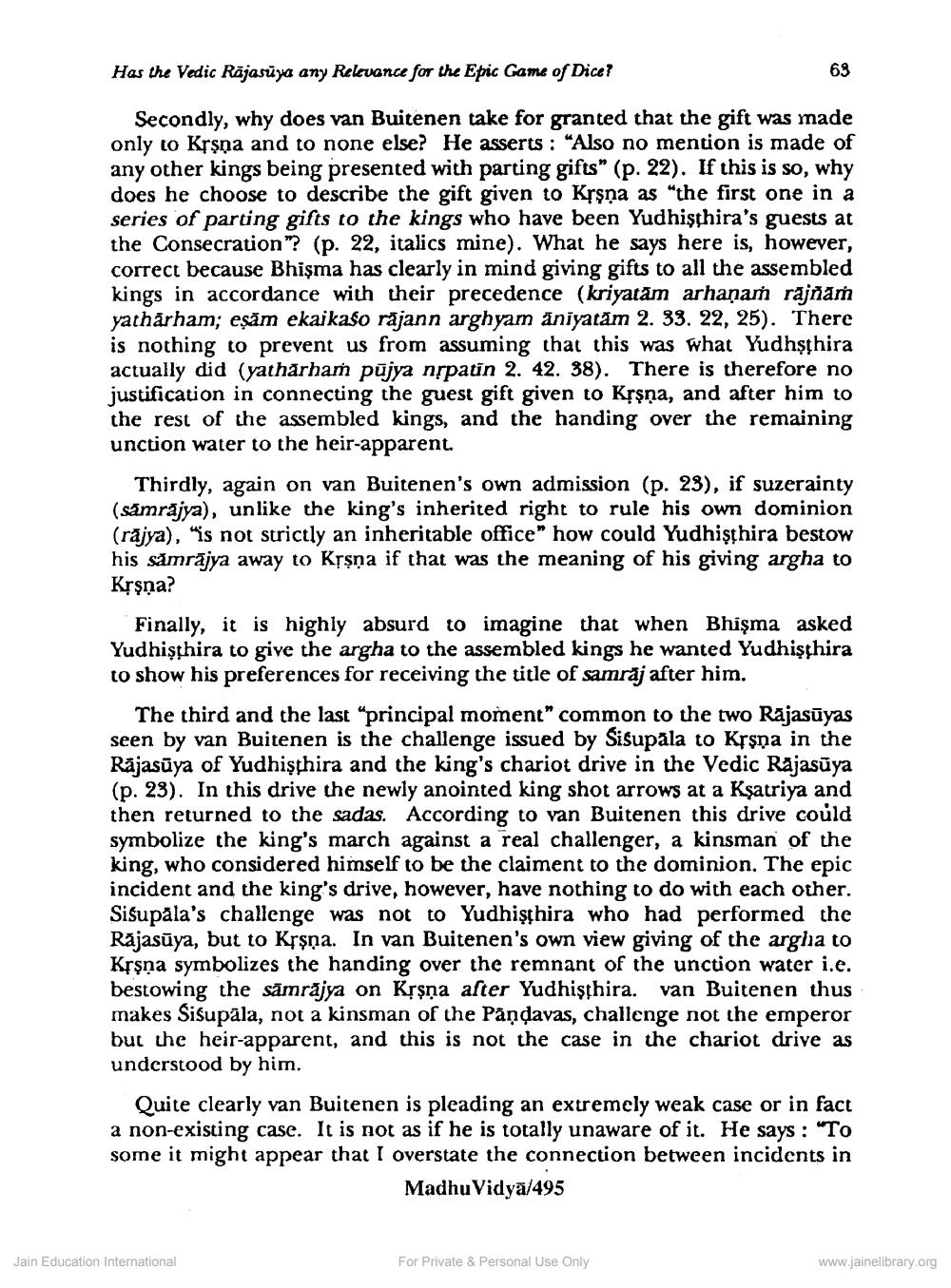________________
Has the Vedic Rajasuya any Relevance for the Epic Game of Dice?
Secondly, why does van Buitenen take for granted that the gift was made only to Krsna and to none else? He asserts: "Also no mention is made of any other kings being presented with parting gifts" (p. 22). If this is so, why does he choose to describe the gift given to Krsna as "the first one in a series of parting gifts to the kings who have been Yudhisthira's guests at the Consecration"? (p. 22, italics mine). What he says here is, however, correct because Bhisma has clearly in mind giving gifts to all the assembled kings in accordance with their precedence (kriyatam arhaṇarh rajñām yatharham; eşăm ekaikašo rajann arghyam āniyatām 2. 33. 22, 25). There is nothing to prevent us from assuming that this was what Yudhsthira actually did (yatharham pūjya nṛpatin 2. 42. 38). There is therefore no justification in connecting the guest gift given to Kṛṣṇa, and after him to the rest of the assembled kings, and the handing over the remaining unction water to the heir-apparent.
Thirdly, again on van Buitenen's own admission (p. 23), if suzerainty (samrajya), unlike the king's inherited right to rule his own dominion (rajya), "is not strictly an inheritable office" how could Yudhisthira bestow his samrajya away to Kṛṣṇa if that was the meaning of his giving argha to Kṛṣṇa?
63
Finally, it is highly absurd to imagine that when Bhisma asked Yudhisthira to give the argha to the assembled kings he wanted Yudhisthira to show his preferences for receiving the title of samraj after him.
The third and the last "principal moment" common to the two Rajasüyas seen by van Buitenen is the challenge issued by Sisupala to Krspa in the Rajasuya of Yudhisthira and the king's chariot drive in the Vedic Rajasuya (p. 23). In this drive the newly anointed king shot arrows at a Ksatriya and then returned to the sadas. According to van Buitenen this drive could symbolize the king's march against a real challenger, a kinsman of the king, who considered himself to be the claiment to the dominion. The epic incident and the king's drive, however, have nothing to do with each other. Sisupala's challenge was not to Yudhisthira who had performed the Rajasuya, but to Krsna. In van Buitenen's own view giving of the argha to Krsna symbolizes the handing over the remnant of the unction water i.e. bestowing the samrajya on Kṛṣṇa after Yudhisthira. van Buitenen thus makes Sisupala, not a kinsman of the Pandavas, challenge not the emperor but the heir-apparent, and this is not the case in the chariot drive as understood by him.
Quite clearly van Buitenen is pleading an extremely weak case or in fact a non-existing case. It is not as if he is totally unaware of it. He says: "To some it might appear that I overstate the connection between incidents in Madhu Vidya/495
Jain Education International
For Private & Personal Use Only
www.jainelibrary.org




